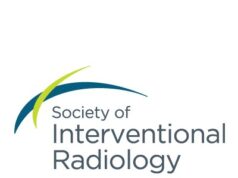
Thousands of eligible patients are not receiving endovascular thrombectomies after suffering a stroke due to a shortage of neurointerventionalists worldwide. In an effort to combat this, the Society of Interventional Radiology (SIR), the Cardiovascular and Interventional Radiological Society of Europe (CIRSE), and the Interventional Radiology Society of Australasia (IRSA) believe interventional radiologists must treat acute ischaemic stroke patients. SIR has today published an update of its stroke guidelines, outlining the pathways to ensure adequate training for those performing the procedure. David Sacks, lead author of these guidelines and a physician who has been involved in stroke intervention since the original publication of the PROACT trial in 1999, here describes why involving interventional radiologists in stroke care is critical.
How many patients with acute ischaemic strokes could be treated with emergency endovascular thrombectomy (EVT) but are not? Why is this happening? What can be done to help?
In the USA in 2015–2016, only 2.6% of stroke patients received EVT.1 A European survey on stroke care authored by Aguiar de Sousa et al on behalf of the European Stroke Organisation (ESO), the European Society of Minimally Invasive Neurological Therapy (ESMINT), the European Academy of Neurology (EAN), and the Stroke Alliance for Europe (SAFE) found that EVT was offered in 40 of 44 European countries. On average across the continent, the procedure was offered for 1.9% of all strokes.2 The highest country rate was 5.6% of all strokes. Assuming that 5% is a reasonable goal, this means that 67,000 patients were clinically eligible for EVT but not treated.
Notably, the European survey considered 5% to be a conservative estimate. There is strong evidence from the DAWN and DEFUSE 3 trials3 to treat selected patients up to 24 hours after stroke onset. Furthermore, patients over 80 years of age have a similar odds ratio of benefit compared to younger patients.4 Randomised trials are underway to evaluate the benefit of EVT for mild strokes, large core infarcts, and patients with moderate baseline disability. In one published national registry of current practice, 11% of treated patients had mild strokes, not currently included in treatment guidelines.5 Patients with large core infarcts are also likely to benefit.6 In the UK, it is estimated that about 10% of stroke admissions would be eligible for EVT, an estimate which does not include patients with mild strokes, large cores, baseline disability, or time from stroke onset >12 hours.7 It is estimated that 30–46% of acute ischaemic strokes involve large vessel occlusions,8–11 and a recent commentary suggests that every stroke patient with an acute large vessel occlusion “should undergo thrombectomy unless the weight of evidence is strongly against treatment”.12
Why are more eligible patients not being treated? In the European survey, the most common reasons were lack of specifically trained personnel, lack of facilities, and costs. Multiple studies have demonstrated that EVT is a highly cost-effective intervention, but stroke interventions involve complex care, from ambulance staff to emergency department and radiology evaluation, patient transport, endovascular treatment, critical care management, stroke unit care, and rehabilitation. The resources to provide this care have not yet caught up with the recent proof of effectiveness of EVT.
One way to provide additional personnel is to train vascular interventional physicians to provide EVT. In theory, this would allow EVT to be provided in locations where neurointerventional physicians are not able to provide 24/7 care, or not available at all. Hospitals that may not have sufficient volumes of cerebral aneurysms or vascular malformations to support multiple neurointerventional physicians may be able to provide EVT by sharing the EVT work with other endovascular colleagues. This raises a series of questions: can other interventional physicians be trained sufficiently to provide EVT such that outcomes meet international benchmarks? Might the learning curve for training be such that patients would be better off not being treated at all, or being transferred to another hospital with delayed treatment? If a hospital cannot provide 24/7 coverage by physicians specifically trained for neurointerventional procedures, might it also lack the infrastructure to provide all of the rest of the complex care that is necessary to achieve good outcomes? Might the treatment of stroke patients at many local hospitals lead to many low-volume centres with suboptimal outcomes compared to a few high-volume centres? Many of these questions will require trials for answers. In the meantime, patients with acute ischaemic strokes are being vastly undertreated with EVT.
Interventional radiology societies believe that appropriately trained interventional radiologists can help address the manpower needs. Interventional radiologists are currently active providers of EVT. The majority of the interventional physicians in The Netherlands who participated in the MR CLEAN trial and registry were interventional radiologists. The odds ratio for benefit in the MR CLEAN trial was the same as for the neurointerventional trial sites.13 The vast majority of the physicians providing EVT in the Czech Republic are interventional radiologists, and published results from the Czech registry are comparable to neurointerventional outcomes. In the USA, 60% of primary stroke centres perform EVT, and of these, 41% rely on interventional radiology physicians,14 and overall, 34% of EVT cases were performed by physicians who had not trained in dedicated neurointerventional fellowships.15 In a survey conducted by the Society of Interventional Radiology (SIR), approximately 25% of interventional physicians providing EVT at certified comprehensive or thrombectomy-capable stroke centres are interventional radiologists. SIR, the Cardiovascular and Interventional Radiological Society of Europe (CIRSE), and the Interventional Radiology Society of Australasia (IRSA) have published a joint statement on the role of interventional radiologists in acute stroke interventions.16 Working with neurologic and neurointerventional sister societies, SIR and CIRSE have published international benchmarks for EVT outcomes.17 A European pathway for training interventional radiologists in stroke interventions has been established.18 SIR has just published an update of its training guidelines written by multispecialty authors from Interventional radiology, neurointerventional, combined interventional radiology and neurointerventional, stroke neurology, and endovascular neurosurgery backgrounds. The SIR training guidelines require a background of endovascular expertise supplemented with stroke specific imaging, cognitive, and technical training.
EVT is a powerful tool to reduce disability from acute ischaemic stroke. There is strong evidence that eligible patients are not receiving EVT due to a shortage of EVT physicians. IR physicians are currently working with our neurointerventional colleagues to provide this care with acceptable outcomes.
David Sacks is an interventional radiologist in the Department of Interventional Radiology at The Reading Hospital and Medical Center, West Reading, USA.
References:
- Stein et al, Journal of NeuroInterventional Surgery, doi:10.1136/neurintsurg-2019-015019
- Aguiar de Sousa et al, European Stroke Journal 2019; 4:13–28
- Nogueira et al, New England Journal of Medicine 2018; 378:11–21
- Albers et al, New England Journal of Medicine 2018; 378:708–718
- Goyal et al, Lancet 2016; 387:1,723–1,731
- Asdaghi et al, Stroke 2019; 50:2,101–2,107
- Panni et al, Stroke 2019; 50:1,164–1171
- McMeekin et al, European Stroke Journal 2017; 2:319–326
- Lakomkin et al, Journal of NeuroInterventional Surgery (JNIS) 2019; 11:241–245
- Smith, Stroke 2009; 40:3,834–3840
- El Tawil et al, European Stroke Journal 2016; 1:264–271
- Nogueira and Ribo, Stroke, 50:2,612–2,618
- Flynn et al, European Stroke Journal 2017; 2:308–318
- Alberts et al, Interventional Neuroradiology 2017; 23:64–68
- Kamel, Journal of the American Medical Association (JAMA) Neurology [Year]; [Issue; Pages]
- Sacks et al, J Vasc Interv Radiol 2019; 30:131–133
- Sacks et al, J Vasc Interv Radiol 2018; 29:441–453
- European Board of Neurointervention. Recommendations for acquiring competence in Acute Ischemic Stroke Intervention (AISI). Available at: https://ams3.digitaloceanspaces.com/ebni-document-storage/68903e8bfc62bb742df0191935e6f112/Standards-of-training-in-AISI-APPROVED.pdf













